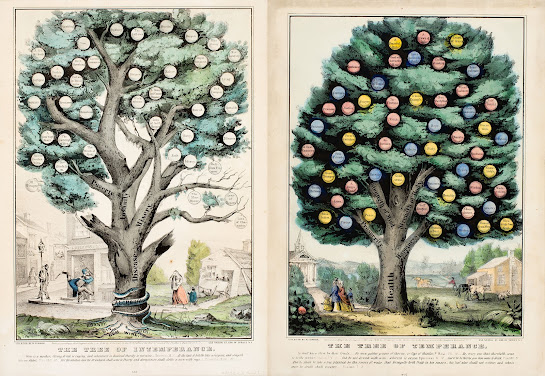THE FIRM of Currier & Ives was founded in 1835, in New York City. It produced mostly colored prints of famous events, and idyllic scenes of American life.
I didn’t realize, until I started looking, that the artists working for the firm also produced their share of racist images. Considering the times, I should not have been surprised.
If I were still teaching today (I retired in 2008), I’d use some of the images below to make important points. For example, I believe it is important to humanize the people we ask our students to study. So, I always looked for examples that proved people don’t really change. I’ll start with those.
These images were gathered online and are not in the blogger’s possession. They are provided as a service to educators only.
 |
I think students would be amused by this print. How similar is this couple to a modern couple? |
 |
Would this driver be like a driver today in any way? |
.jpg) |
What's the same, and what's different in this scene, and today? |
 |
How would people in Central Park, c. 1875, be like us? |
.jpg) |
What would be better or worse about living in 1840? |
.jpg) |
In the two scenes above, what are the people thinking? And who are the heroes? |
 |
What does this scene seem to say? I might ask students to write a paragraph about anyone (or any living creature) shown here. What are they thinking, where are they going, what are their lives like? |
.jpg) |
An idyllic scene of wagons headed West. |
.jpg) |
Why would a woman's image be used here? |
 |
Battle of Williamsburg 1862. |
 |
This scene strikes me as lame. |
 |
Battle of Antietam. |
 |
The "perfect" family, c. 1876. Students might want to comment on what this shows. (The woman has a bustle.) In fact, what is the perfect family today??? |
 |
Would living in 1870 be better in some ways? |
 |
When the Lexington caught fire on a trip between Boston and New York City, only four of the 143 people aboard survived. |
 |
Mississippi River travel, c. 1860. |
.jpg) |
Flood along the river. |
.jpg) |
Ugh!!! When it was thought acceptable to display racism. |
 |
What are these men discussing? Politics, possibly? |
.jpg) |
What are these children thinking? |
.jpg) |
Ideal beauty, c. 1876. |
.jpg) |
Custer as hero - not reckless fool. |
 |
The fruits of intemperance and temperance. |
Below:
scenes of New York City and surrounding area.
.jpg) |
Long Island. |
 |
The bridge was completed in 1869. |
.jpg) |


.jpg)

.jpg)



.jpg)






.jpg)


.jpg)

.jpg)


.jpg)
.jpg)

No comments:
Post a Comment